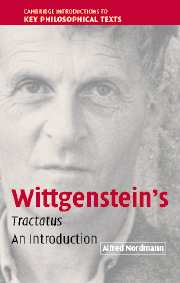Book contents
- Frontmatter
- Contents
- Preface
- List of abbreviations of works by Wittgenstein
- Introduction: Wittgenstein's provocation
- 1 Critical philosophy
- 2 The argument
- 3 Thought experiments
- 4 Tense and mood
- 5 The senses of sense
- Conclusion: a sense of familiarity
- References
- Index of names and subjects
- Index of passages
Introduction: Wittgenstein's provocation
Published online by Cambridge University Press: 03 February 2010
- Frontmatter
- Contents
- Preface
- List of abbreviations of works by Wittgenstein
- Introduction: Wittgenstein's provocation
- 1 Critical philosophy
- 2 The argument
- 3 Thought experiments
- 4 Tense and mood
- 5 The senses of sense
- Conclusion: a sense of familiarity
- References
- Index of names and subjects
- Index of passages
Summary
A DISTURBING CONCLUSION
This investigation is another in a long series of responses to the extraordinary provocation by a small book that was published in 1922. Many philosophers provoke admiration and respect, and when we find them difficult to understand our response is puzzlement and the desire to explore the depth of their thought. In striking contrast, readers of Ludwig Wittgenstein's Tractatus Logico-Philosophicus typically respond with “It can't be so,” resisting its conclusion, seeking out where it might have gone wrong. While much is disputed about Wittgenstein's work, this uncomfortable and still provocative conclusion can be sketched with a few broad strokes.
In his book, the Tractatus for short, Wittgenstein distinguishes three uses of language or, more precisely, three types of sentences. Then he shows us what good these sentences are or whether they are any good at all. At the end of this investigation he leaves us with precious little and a rather restrictive view of what one can and cannot say. Moreover, this view flies in the face of what we thought we could say, brazenly contradicting how we like to think of ourselves.
The first of the three types of sentences is ordinary and familiar enough: “The blue car hit the red car from the right,” “The sample of iron melted at 1,535 degrees Celsius,” “Rita is not at home but George is.” These kinds of sentences show language at its best.
- Type
- Chapter
- Information
- Wittgenstein's TractatusAn Introduction, pp. 1 - 13Publisher: Cambridge University PressPrint publication year: 2005



